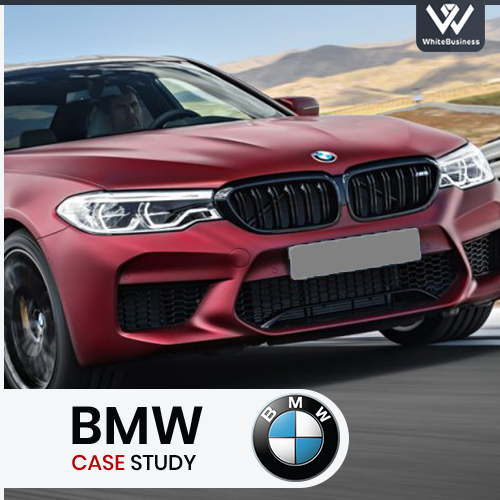China's Automotive Market: A Case Study Of BMW And Porsche's Experiences

Table of Contents
China's automotive market is the world's largest, boasting annual sales exceeding 20 million vehicles. This incredible growth presents immense opportunities and significant challenges for global automakers. This article delves into the experiences of two prominent luxury brands, BMW and Porsche, analyzing their successes and challenges in penetrating and navigating this rapidly expanding market. We will explore their localization strategies, marketing approaches, sales performance, and the competitive landscape, offering valuable insights for understanding the complexities of China's automotive market.
<h2>BMW's Strategy in China: A Deep Dive</h2>
BMW's success in China is a testament to its strategic approach, which combines localization, effective marketing, and a strong understanding of the Chinese consumer.
<h3>Localization and Production</h3>
BMW's long-standing partnership with Brilliance Auto has been instrumental in its success. This joint venture, BMW Brilliance Automotive, allows BMW to leverage local expertise, reduce production costs, and gain preferential access to the Chinese market. Localized manufacturing is crucial for meeting the specific demands of Chinese consumers, including preferences for certain features and engine options.
- Successful Localized Models: The BMW X1, specifically tailored for the Chinese market with longer wheelbase versions, has been a major success. The 3 Series long wheelbase is another example.
- Production Capacity in China: BMW Brilliance has significantly increased production capacity in recent years, showcasing the brand's commitment to the Chinese market.
- Investment in Local Facilities: Substantial investments in manufacturing plants and R&D facilities across China demonstrate BMW's long-term commitment to the region.
<h3>Marketing and Branding</h3>
BMW's marketing campaigns in China are highly targeted and sophisticated, employing a multi-channel approach to reach different consumer segments. The brand emphasizes its image of innovation, luxury, and driving performance.
- Key Marketing Strategies: BMW leverages both traditional and digital marketing channels, including television commercials, print advertising, and a strong online presence.
- Celebrity Endorsements: Strategic partnerships with influential Chinese celebrities have helped enhance brand visibility and appeal.
- Successful Ad Campaigns: BMW's creative ad campaigns often resonate with the cultural nuances and aspirations of the Chinese consumer.
- Social Media Engagement: Active engagement on Chinese social media platforms like WeChat and Weibo is crucial for building brand awareness and fostering customer interaction.
<h3>Sales Performance and Market Share</h3>
BMW consistently ranks among the top-selling luxury car brands in China.
- Sales Data (Charts/Graphs): [Insert relevant charts and graphs illustrating BMW's sales figures in China over the past few years. Source the data appropriately.]
- Market Share Comparison: [Compare BMW's market share with competitors like Mercedes-Benz and Audi. Source the data appropriately.]
- Key Performance Indicators (KPIs): Key performance indicators, such as sales volume, market share, and customer satisfaction scores, highlight BMW's strong performance in the Chinese market.
<h2>Porsche's Approach to the Chinese Market: A Comparative Analysis</h2>
Porsche, while also focusing on the luxury segment, has adopted a distinct strategy compared to BMW.
<h3>Targeting the High-End Segment</h3>
Porsche focuses squarely on the high-end luxury car market in China. Its brand image of exclusivity, performance, and heritage resonates strongly with affluent Chinese consumers seeking prestige and status.
- Sales Figures for Specific Models: The Cayenne and Macan SUVs have been particularly popular in China, reflecting the growing demand for luxury SUVs in the market. [Include specific sales data if available. Source appropriately.]
- Pricing Strategies: Porsche maintains premium pricing, reflecting its brand image and product quality.
- Target Demographics: Porsche targets high-net-worth individuals and young professionals who aspire to a sophisticated lifestyle.
<h3>Building Brand Exclusivity and Prestige</h3>
Maintaining brand exclusivity is paramount for Porsche.
- Examples of Exclusive Events: Porsche hosts exclusive driving experiences and events to foster a sense of community among its customers.
- Customer Service Initiatives: Exceptional customer service and personalized experiences are critical to building brand loyalty.
- Dealer Network Strategies: Porsche's carefully selected dealer network plays a vital role in maintaining brand image and providing superior customer service.
<h3>Overcoming Challenges and Adapting to the Market</h3>
Despite its success, Porsche has faced challenges in China.
- Specific Challenges Faced: Competition from other luxury brands, fluctuating import tariffs, and evolving regulatory environments are some of the challenges Porsche has navigated.
- Strategies to Overcome Challenges: Porsche has adapted by increasing localized production, tailoring models to specific consumer preferences, and investing in its dealer network.
- Lessons Learned: Understanding the evolving preferences of the Chinese consumer is crucial for maintaining competitiveness.
<h2>Comparative Analysis: BMW vs. Porsche in China</h2>
Both BMW and Porsche have achieved significant success in China, but their strategies differ. BMW emphasizes broader market penetration through localization and a wider range of models, while Porsche focuses on maintaining brand exclusivity and targeting the high-end segment. Both brands demonstrate the importance of understanding and adapting to the unique preferences of the Chinese consumer. [Include a bullet point comparison table summarizing key differences and similarities.]
<h2>Conclusion: Key Takeaways and Call to Action</h2>
This case study highlights the successes and challenges of BMW and Porsche in China's automotive market. Both brands demonstrate the critical importance of localization, effective marketing tailored to Chinese consumer preferences, and a deep understanding of the unique cultural landscape. The ability to adapt and innovate is paramount for success in this dynamic and rapidly evolving market. Learn more about navigating China's automotive market and developing successful strategies for your business. The opportunities within China's automotive market are vast, and understanding the experiences of established players like BMW and Porsche provides invaluable insight for future market entrants.

Featured Posts
-
 Common Misunderstandings In Wrongful Death Cases
Apr 25, 2025
Common Misunderstandings In Wrongful Death Cases
Apr 25, 2025 -
 Semi Truck Accident On Kilpatrick Turnpike Leads To Significant Traffic Congestion
Apr 25, 2025
Semi Truck Accident On Kilpatrick Turnpike Leads To Significant Traffic Congestion
Apr 25, 2025 -
 Descubra A Tendencia Maquiagem Com Efeito Aquarela
Apr 25, 2025
Descubra A Tendencia Maquiagem Com Efeito Aquarela
Apr 25, 2025 -
 Anzac Day Disrespected Aussie War Veterans Scathing Criticism Of School And Countrys Trajectory
Apr 25, 2025
Anzac Day Disrespected Aussie War Veterans Scathing Criticism Of School And Countrys Trajectory
Apr 25, 2025 -
 Newton Aycliffes House Of Hair Featured In The Echos Top Ten
Apr 25, 2025
Newton Aycliffes House Of Hair Featured In The Echos Top Ten
Apr 25, 2025
Latest Posts
-
 Official New York Mets Announce Final Two Starting Rotation Spots
Apr 28, 2025
Official New York Mets Announce Final Two Starting Rotation Spots
Apr 28, 2025 -
 New York Mets Complete Starting Pitching Staff
Apr 28, 2025
New York Mets Complete Starting Pitching Staff
Apr 28, 2025 -
 Mets Finalize Starting Rotation The Last Two Spots Filled
Apr 28, 2025
Mets Finalize Starting Rotation The Last Two Spots Filled
Apr 28, 2025 -
 Mets Rivals Ace A Career Defining Season
Apr 28, 2025
Mets Rivals Ace A Career Defining Season
Apr 28, 2025 -
 Unstoppable A Mets Rivals Starting Pitcher
Apr 28, 2025
Unstoppable A Mets Rivals Starting Pitcher
Apr 28, 2025
